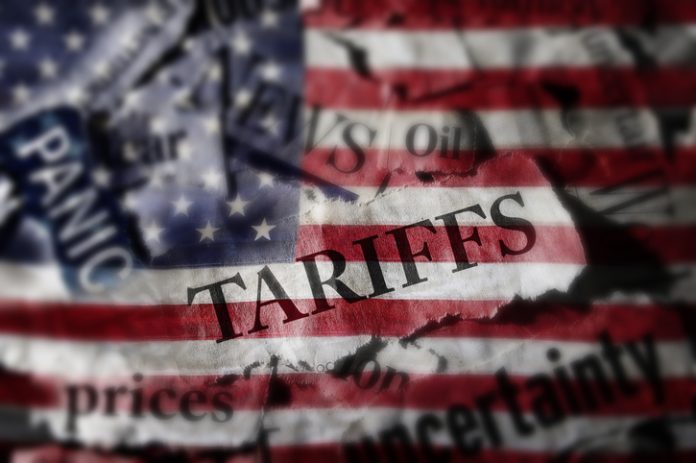In recent years, the United States has implemented various tariffs on imported goods, significantly impacting global trade and domestic inflation. These tariffs, imposed as part of broader trade policies, aim to protect domestic industries but often have unintended consequences. Businesses and consumers face higher costs, supply chain disruptions, and shifting market dynamics. Additionally, the retaliatory measures taken by trading partners contribute to uncertainty in international markets. Understanding the complex relationship between U.S. tariffs, inflation, and global trade is essential for policymakers, business leaders, and economists. This article explores the’ direct and indirect effects of U.S. tariffs, evaluating their impact on inflation, trade partnerships, and the broader global economy.
The Relationship Between Tariffs and Inflation
To better understand how U.S. tariffs have influenced inflation and trade, the table below outlines key statistics from recent years, showcasing tariff rates, inflation trends, and trade volume changes.
| Year | Average Tariff Rate (%) | Inflation Rate (%) | U.S. Import Volume Change (%) | U.S. Export Volume Change (%) | Trade Deficit (Billion $) |
| 2018 | 6.5 | 2.4 | -1.5 | -2.3 | 622 |
| 2019 | 7.3 | 1.8 | -3.2 | -2.7 | 576 |
| 2020 | 8.1 | 1.2 | -4.8 | -3.5 | 678 |
| 2021 | 7.8 | 4.7 | -2.1 | -1.9 | 703 |
| 2022 | 7.5 | 6.2 | -1.0 | -0.7 | 738 |
| 2023 | 7.2 | 5.4 | 0.5 | 0.8 | 725 |
This data highlights the correlation between rising tariffs, inflation fluctuations, and changes in trade volume. As tariffs increased, import and export volumes declined, leading to higher costs and trade imbalances.
How Tariffs Contribute to Rising Prices
Tariffs are taxes imposed on imported goods, increasing their costs for businesses and consumers. When tariffs are levied, importers often pass on these additional costs to consumers through higher prices. This price increase contributes to inflation, making everyday goods more expensive. Industries that rely heavily on imports, such as manufacturing, technology, and retail, are particularly vulnerable to these price hikes.
Additionally, the cost of raw materials and components used in domestic production rises when tariffs target essential imports like steel, aluminum, and semiconductors. As production costs increase, businesses must either absorb these expenses or transfer them to consumers, fueling inflation.
The Ripple Effect on Supply Chains
U.S. tariffs not only raise prices but also disrupt supply chains. Many American companies depend on international suppliers for critical components and raw materials. When tariffs make these imports more expensive or less accessible, businesses must seek alternative suppliers, often at higher costs.
Plinko bd also illustrates how changing economic conditions impact various industries, including online gaming and entertainment, which are sensitive to fluctuations in consumer spending and global trade dynamics.
The Global Trade Consequences of U.S. Tariffs
U.S. tariffs have far-reaching effects beyond domestic inflation. These policies influence international trade relations, causing shifts in economic alliances and competitive dynamics among major global economies. Countries impacted by U.S. tariffs respond in various ways, from implementing retaliatory measures to negotiating new trade agreements that bypass traditional economic dependencies.
Trade Wars and Retaliatory Measures
One of the most significant consequences of U.S. tariffs is retaliation from other countries. When the U.S. imposes tariffs on imports from major trading partners like China, the European Union, or Canada, these countries often respond with tariffs on American exports. This tit-for-tat escalation leads to trade wars, increasing business costs on both sides and further slowing global economic growth.
For instance, when the U.S. imposed tariffs on Chinese goods, China responded with tariffs on American agricultural products, affecting U.S. farmers and agricultural exports. This retaliatory cycle reduces international trade volumes, disrupts long-standing trade relationships, and creates economic uncertainty.
Shifts in Global Trade Alliances
As U.S. tariffs alter trade dynamics, countries seek new economic partnerships to minimize their dependence on American markets. The rise of regional trade agreements, such as the Comprehensive and Progressive Agreement for Trans-Pacific Partnership (CPTPP) and the Regional Comprehensive Economic Partnership (RCEP), reflects this shift. Countries within these agreements benefit from reduced trade barriers, strengthening their economies while reducing reliance on U.S. trade.
Meanwhile, American businesses looking to mitigate tariff costs are expanding operations in countries that offer tariff-free trade benefits. Companies are restructuring supply chains by relocating production facilities to nations with favorable trade agreements, ultimately reshaping global trade flows.
The Impact of Tariffs on Domestic Industries
While tariffs are often justified to protect local businesses and industries, their impact varies across sectors. Some industries benefit from reduced foreign competition, while others struggle with increased costs due to disrupted supply chains and retaliatory trade policies from affected nations.
U.S. Manufacturing and Export Challenges
While tariffs are designed to protect domestic industries, their effectiveness is often debated. Some sectors, such as steel and aluminum, benefit from reduced foreign competition. However, industries reliant on imported materials, such as automotive manufacturing and consumer electronics, struggle with rising costs.
U.S. exporters also face challenges when foreign markets impose retaliatory tariffs. Farmers, for example, experience reduced demand for agricultural exports, forcing them to seek alternative markets or rely on government subsidies to offset losses. This impact extends to other export-driven industries, including aerospace and technology.
Small Businesses and Consumer Spending
Small businesses, which often operate on thin profit margins, are particularly vulnerable to tariff-induced cost increases. Unlike large corporations, smaller enterprises have limited resources to absorb higher expenses, making competing in a tariff-impacted economy difficult.
Additionally, rising consumer prices due to tariffs lead to decreased discretionary spending. When households allocate more of their budgets to essential goods, industries reliant on consumer spending, such as retail, entertainment, and tourism, experience slowed growth.
Looking Ahead: Policy Considerations and Future Trends
The future of U.S. trade policies remains uncertain as global economic conditions evolve. Lawmakers and industry leaders continue to debate the effectiveness of tariffs in addressing trade imbalances while maintaining economic stability. Future strategies may involve renegotiating trade agreements, implementing targeted tax incentives, or exploring new market opportunities to offset the impact of existing tariffs.
Potential Revisions to Trade Policies
As the global economy continues to evolve, U.S. policymakers face increasing pressure to reassess the impact of tariffs. Future trade agreements, diplomatic negotiations, and economic strategies will determine whether tariffs remain central to U.S. trade policy or if alternative measures, such as targeted subsidies and tax incentives, take precedence.
The Long-Term Outlook for Global Trade
Technological advancements, sustainability initiatives, and economic realignments will likely shape the future of global trade. As businesses adapt to new trade landscapes, supply chain resilience, digital trade, and emerging markets will play critical roles in maintaining economic stability.
Conclusion
U.S. tariffs continue to shape inflation and global trade, affecting businesses, consumers, and international economic relationships. While intended to protect domestic industries, tariffs often have unintended consequences, including rising prices, trade wars, and shifts in global market dynamics. Understanding these effects is crucial for businesses and policymakers navigating an increasingly complex economic environment. Moving forward, trade policies must strike a balance between economic protectionism and sustainable global trade practices to ensure long-term stability and growth.



































